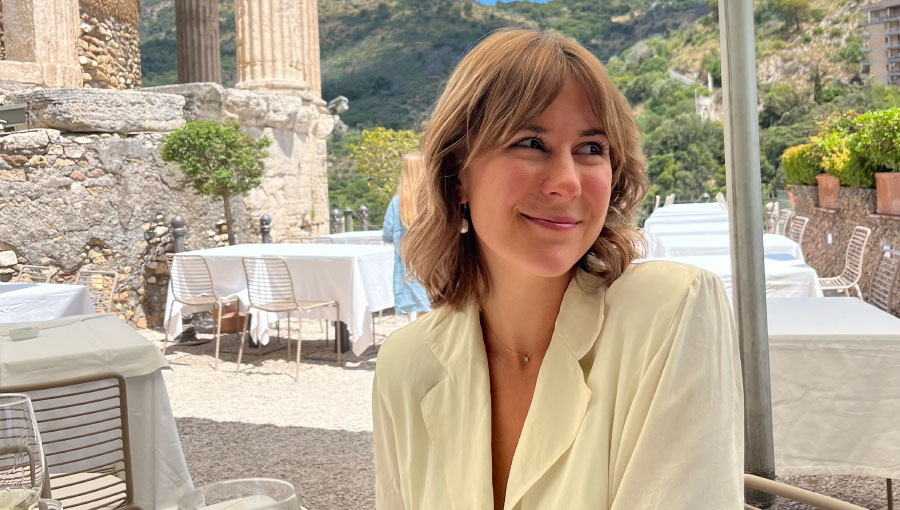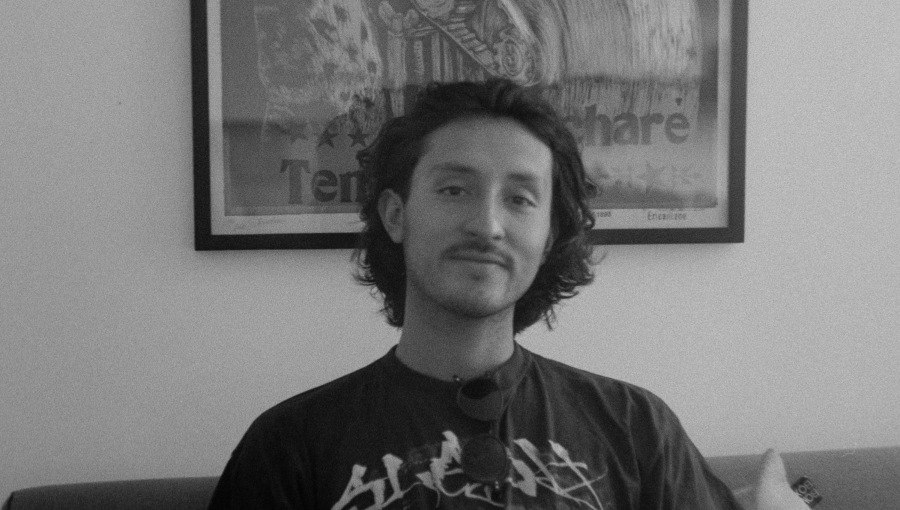A Field Like No Other: Meet Art History Major Olivia De Laura
Olivia De Laura, who hails from Virginia, is an Art History major in her junior year at John Cabot University. An active member of the Art History Society, she is co-coordinator of the club’s social media.
Tell us about your background.
I grew up nestled in the foothills of the Blue Ridge Mountains near Charlottesville, VA, a town full of early American history. One of six children, my architect parents homeschooled us with a rich liberal arts curriculum of interdisciplinary and multicultural skills that resulted in studies within Italy, France, and England by the time I graduated high school. For me, this culminated in a track that focused on the French language, classical piano, international affairs, and extensive ballet training. Moving to Europe to pursue my undergraduate degree seemed like a natural extension of my interests and skills in high school.
What made you decide to come to JCU to study art history?
The accessibility of diverse cultures and students present at JCU was a winning factor from the start. Having grown up in the US but having studied and traveled extensively worldwide, I knew that I would find JCU a welcome challenge. I have always pursued the goal of being a “global” citizen.

Originally an international affairs major, I was won over to art history after taking only one introductory course, Professor Sarah Linford’s Foundations in Modern Art (AH 154). The Art History department is that good. The sheer immediacy and relevancy of the course content, Dr. Linford’s endless knowledge and insight, the accessibility of art to us students here in Rome, and my peers’ engaging curiosity captivated me, pushing me into the field before I even knew what was happening. Students and faculty in this field are like no other. A brief conversation at the end of the semester with Dr. Linford further encouraged me: she assured me that she would be sorely disappointed should I not choose to pursue an art history degree in light of my skills — what was I to do in the face of such support and enthusiasm? I committed fully to art history that fateful summer in 2023; the rest is history.
What have you been enjoying the most about your art history courses?
It is hard to pinpoint the x-factor that the Art History department possesses here at JCU: there is a sheer and electric enthusiasm that pervades every course, conversation, and event. There exists between us art historians a deep mutual understanding and pursuit of knowledge that I have not found elsewhere: we come to learn, probe, and reconcile objects (that are sometimes thousands of years old) with today’s ever-human issues. The classes are intimate, engaging, and incredibly hands-on. Museums are ever accessible in Rome to further our learning. But the department’s particular strength is the sheer breadth of courses offered each semester. In the course of one morning, you can find yourself studying early Imperial Roman portraiture (e.g. Professor Hansen’s Rome in the Age of Augustus AH 352), moving on to Caravaggio’s radical religious scenes (e.g. Professor Tuck Scala’s Caravaggio AH 373), followed by a heated discussion on Dada vs. Futurist performance art (e.g. Professor Gianni’s Performance Art, AH 283).
What is a class and/or professor that has had an impact on you and why?
Undoubtedly, Dr. Sarah Linford is the very reason I chose art history as my full-time academic pursuit. First and foremost, as an avid art historian and curator, her ardor for the field will rub off on you. Secondly, she possesses the keen ability to recognize and encourage each student’s skills and passions, making herself ever available to students to foster our curiosity and push us to our best. Lastly, her teaching method is incomparable, combining the best of old-school art-historical memorization with critical thinking to train students in a plethora of methodologies and skills. It is impossible to go through one of her courses without coming through the other side with complete mastery of the content covered and with a deeper set of skills with which to approach the art-historical field.
Tell us about your role in the Art History Society (AHS) at JCU.
This fall marks my first year moving into a leadership role as I’m stepping up to co-run the Art History Society’s (AHS) social media. The AHS has been a key element in my experience at John Cabot, molding and enriching both my academic track as well as my community life, and the opportunity to be part of such a committed, diverse student board is thrilling. Whether it’s an Artspeaks event (last year we hosted internationally renowned Italian artist Bruna Esposito, for example!) or the seasonal vernissage, the AHS has personally broadened the field of art history from a mere academic exercise to a realm of professional and social discovery—with board positions ranging from curator to president, to treasurer, for example. Notably, however, the AHS is only one “piece” of the much larger “pie,” since John Cabot hosts a plethora of student-run organizations, all of which contribute crucial elements to our student community.
What are your plans for the future?
I intend to apply my visual, aesthetic, and critical transhistorical skills to pursue a career in the art direction of luxury brands, and I am currently considering graduate schools in the U.S., France, or Italy. Art historians have the special gift of using all parts of the liberal arts “brain:” history, linguistics, mathematics, and artistic creation are all intertwined in our practice. My foremost preoccupation within the field is the recurring intersection of visual arts and language used in persuasive means, whether as political propaganda, cultural memory, or basic marketing. My goal in pursuing the luxury goods sector is also specific to cultivating an international career that can span the oceans between France, the U.S., and perhaps even Italy. I have found that constant movement—and at times, discomfort—are crucial to continue the learning process. Exposure to new languages, cultures, and ideas never hurt anyone.
What would you say to a prospective student considering studying art history at JCU?
The Art History department here has it all: a deeply committed and talented faculty, a richly diverse and thorough program, and the setting of Rome puts 2,800+ years of art history at your fingertips—spanning from early Republican ruins within the Forum to contemporary installations at the Maxxi museum. There is something of interest for every student, and you will quickly find in your professors the scholars and mentors to help shape your individual path, encouraging you to become the art historian you can only dream of being today. Come, share, and discover for yourself the magic of this program: the inexplicable pursuit of beauty, knowledge, and appreciation.





